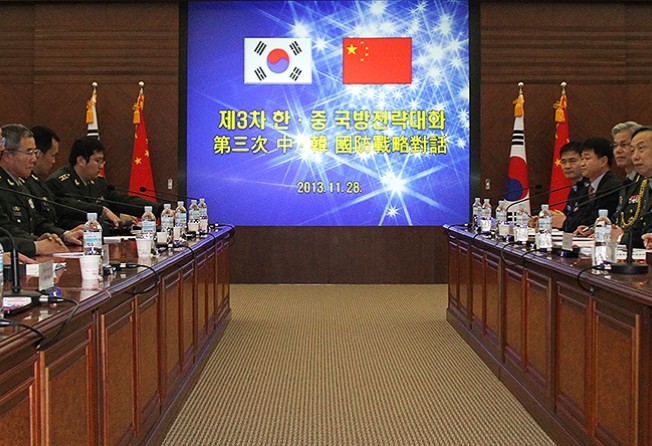
China sends aircraft to patrol air defence identification zone
Prospect of regular patrols raises tensions after Japan and South Korea both defy restrictions

China sent several aircraft to patrol its air defence identification zone yesterday and said such missions would become regular events, raising tensions with countries that refuse to recognise the zone.

Late on Tuesday the US sent two B-52 bombers over the zone.
Air force spokesman Colonel Shen Jinke said China sent a KJ-2000 early warning aircraft and several Sukhoi Su-30 and J-11 jet fighters into the zone.
Such patrols would become regular in the future "to strengthen the identification and surveillance of flying objects in the ADIZ", Xinhua reported.
Shen said the patrols were defensive and aligned with international practice. The air force would remain on high alert and "adopt proper measures to respond to different threats in the air to firmly guarantee air security", Xinhua cited Shen as saying.
A Chinese expert said Beijing would not resist or resort to military action unless it detected hostile intentions.
Responding to rejection of the air defence identification zone by Japan and the US, the Ministry of National Defence said Japan had no right to judge China. "We would like to ask Japan to revoke its own ADIZ first. China will then consider this request in 44 years," ministry spokesman Yang Yujun said, referring to Tokyo's establishment of its air defence zone in 1969.
Watch: An explainer on what the South China Sea dispute about
Yang said China had conducted "timely identification" of the Japanese and South Korean aircraft and was "in full control" of the situation.
On Saturday, China became the latest country in the region to establish an air defence identification zone. Regional countries responded with concern as the Chinese zone overlaps those of its neighbours, notably around the disputed Diaoyu islands that are claimed by China but controlled by Japan, which calls them the Senkaku islands.
Another concern is that China requires all aircraft, military and civilian, to inform its authorities of their route in advance. Analysts say China does not distinguish between aircraft flying through the ADIZ, which is not its airspace, and those flying towards Chinese airspace. The US only applies identification procedures to foreign flights that intend to enter its airspace.
The Ministry of National Defence has said it would take "defensive emergency measures" if aircraft did not follow its instructions.
Amid growing concern of a miscalculation, Chinese experts said the risks of confrontation remained low at this point.
Xu Guangyu, a retired general, said a standard procedure responding to a foreign aircraft flying in the zone without prior notice would have the Chinese military first engaging in radio communication.
"If you tell us who you are and that you are not here for hostile purposes, there is no problem," Xu said. "If you still don't respond, then that means you are not being friendly. We will send aircraft to follow and monitor you. And if we find out that you are heading to our sovereign airspace we will intercept."
Just as Japan refuses to recognise China's zone, China refuses to recognise Japan's zone, which was first established in 1969 and expanded in 2010, and has sent military aircraft to fly through it without prior notification.
Japan has reported it responded to a record number of Chinese incursions in its ADIZ in the first half of the year.
Li Jie, a Beijing-based naval expert, said the overlap over the disputed Diaoyu islands would force China and Japan to sit down and negotiate.